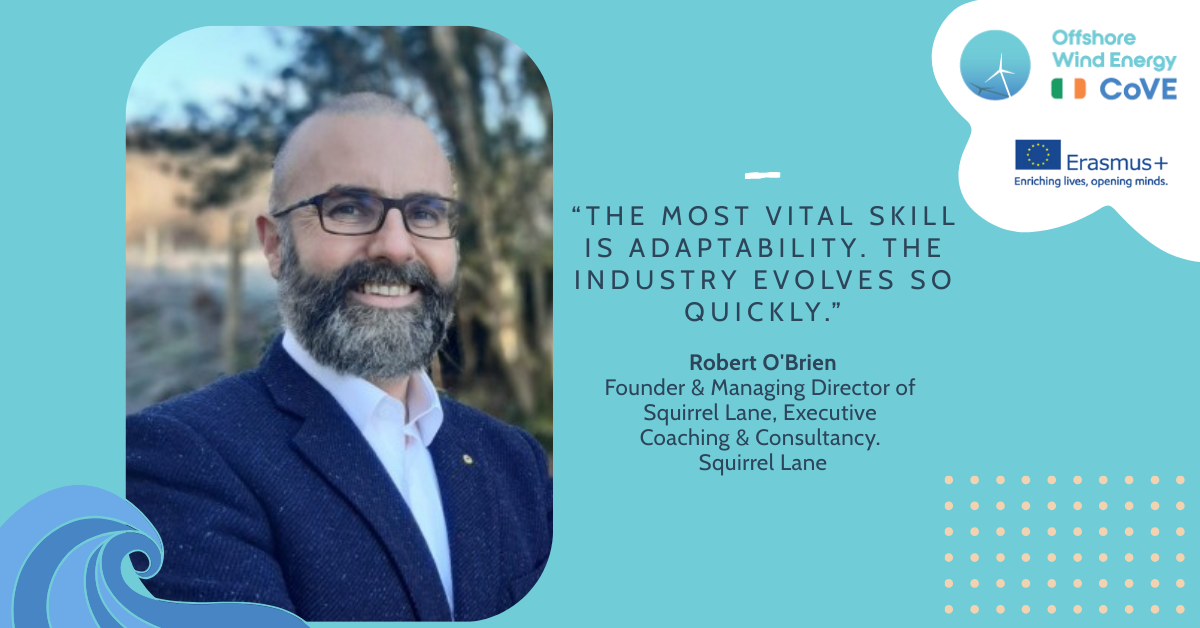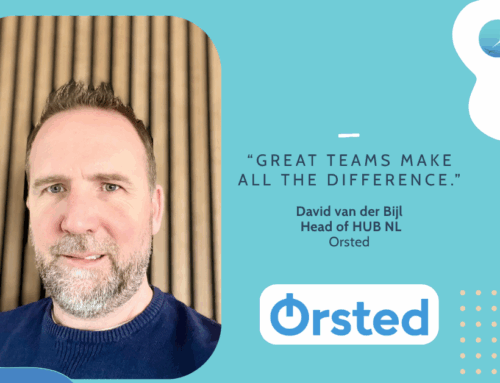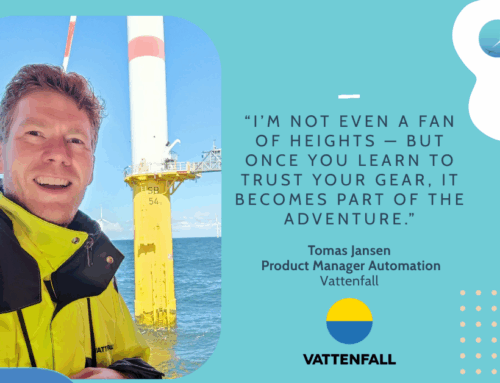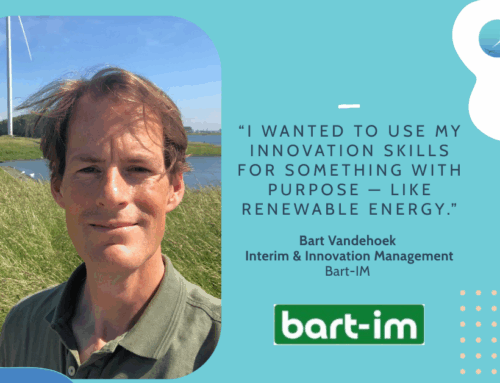Robert O’Brien has seen the wind energy sector evolve from its earliest days in Ireland to today’s global offshore landscape. Starting as a turbine technician in 1996, he climbed daily for years before stepping into asset management, operations leadership, and ultimately serving as Managing Director of Siemens Gamesa Renewable Energy in Ireland. His journey spans onshore and offshore experience, team building, and navigating rapid change in a fast-growing industry.
In this interview, Robert reflects on the career path that took him from wind farms in Donegal to offshore operations in the UK and back to Ireland. He shares his thoughts on adaptability, leadership, and the importance of keeping skills aligned with technology. Now working as a consultant, he continues to champion the sector and offers valuable advice to those considering a career in wind.
Full Interview:
Tell us about your career path in the wind industry.
I started in 1996 as a service technician with B9 Energy, working on some of the earliest wind farms in Ireland. I was involved in everything from development and construction to commissioning and operations. I spent eleven years with B9 — eight of those climbing turbines daily, and the final three in asset management, overseeing owners’ assets.
In 2007, I joined Siemens as Operations Manager, taking on a team of 13 technicians. From there, I helped grow and strengthen that team locally in Ireland. In 2014, I moved to the UK and became Head of Offshore Operations for the West Coast, covering everything from Wales to Cumbria.
At the end of 2016, I returned to Ireland to become Managing Director of Siemens Wind Power, which was later carved out, merged with Gamesa, and became Siemens Gamesa Renewable Energy. I remained Managing Director of the joint entity in Ireland until I left in 2023 to start my own venture.
Looking back, how do you feel about your journey?
It’s been a great experience. I’ve really enjoyed it. While I now work more as a consultant, I’m still active in the industry and continue to find it rewarding.
What skills have helped you succeed most?
A technical foundation is important, of course. But the most vital skill is adaptability. The industry evolves so quickly. If you can’t keep up with the changing technology, systems, and procedures, you’ll struggle. You have to be ready to evolve with it.
What’s surprised you most about working in the wind industry?
The pace of change — without question. When I started, a whole wind farm would generate what a single turbine does today. We’ve gone from turbines producing 0.5 MW to 20 MW. It’s incredible.
I remember using dial-up internet and being the only person I knew with a mobile phone. Every prediction about how fast the sector would grow has been surpassed. And it’s not just the turbines — transportation, lifting equipment, processes, and people’s competences have all transformed.
What advice would you give someone starting out in offshore wind?
Speaking from experience, it’s a fantastic career. My first job as a graduate engineer was in a huge injection moulding plant — 250,000 square feet — but I left that to work on a 3,500-acre wind farm. The open air and natural environment were amazing.
I’d love to see more people consider this industry. It’s a meaningful, dynamic, and fulfilling career. I’m really proud to have been part of it for so long.
Is there anything you wish you knew before starting out?
Honestly, no. That question usually implies regret or something I’d change — but I don’t feel that way. I worked hard, had success, and really enjoyed the journey. Looking back, I feel proud to have contributed to Ireland’s energy future.
Tell us something people might not expect about you.
Believe it or not, I’m scared of heights. Most people are surprised to hear that!
What do you see as the biggest challenge for the industry going forward?
I see two major challenges. First, attracting people into the industry — we’re competing with other sectors, not just in Ireland but globally. And second, making sure we’re keeping skills up to date with evolving technology. The pace of development is so fast that if we don’t invest in training and skills, we’ll be facing problems in 10 or 20 years.
Robert O’Brien’s story is a reminder that successful careers in wind energy are built not just on technical know-how, but on adaptability, curiosity, and long-term commitment. From hands-on work to strategic leadership, his perspective highlights what’s possible in a sector that continues to grow — and why it’s worth joining.





